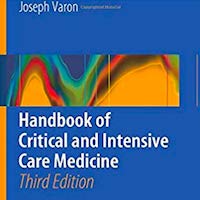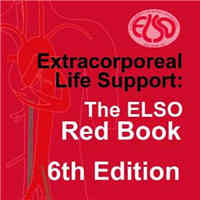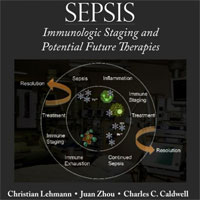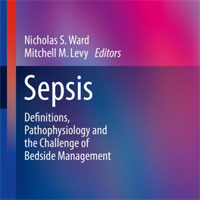Tag: COVID-19
I Was a Doctor Through COVID. Then One Case Pushed Me Over the Edge
On some days I can almost forget that COVID ever happened. The old rhythms of the ICU at University College London, where I am a consultant in critical care and anesthesia, have returned. The bed pressures, the worrying cases,... read more
Extracorporeal Membrane Oxygenation for Adults (Respiratory Medicine)
This new edition presents an evidence-based review of extracorporeal membrane oxygenation (ECMO) for adults, with a particular focus on veno-venous (VV) ECMO. Due to the dramatic impact of COVID-19, the number of institutions... read more
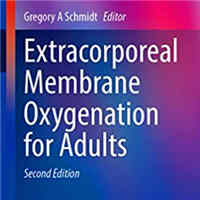
Molnupiravir Improves Recovery Time in COVID-19 Patients at High Risk of Severe Outcomes
This analysis of a large randomized trial involving people who are at high risk of experiencing severe outcomes from COVID-19 and who had been vaccinated against SARS-CoV-2 infection found that adding molnupiravir to usual... read more
China: Nearly 250 million people might be infected with COVID-19
According to a leaked government document that has been circulating on social media, it is estimated that up to 248 million people in China may have been infected with COVID-19 since control measures were lifted. This... read more
ECMO During COVID-19 Collaborative Survey
This collaborative survey done by the Society of Thoracic Surgeons/Extracorporeal Life Support Organization highlights several key changes in ECMO utilization and practice in North America: programs performing >20 VV ECMO... read more
Time from Infiltrate on Chest Radiograph to VV ECMO in COVID-19 Affects Mortality
Venovenous extracorporeal membrane oxygenation (VV ECMO) has been used to treat severe coronavirus disease 2019 (COVID-19) acute respiratory distress syndrome; however, patient selection criteria have evolved throughout the... read more
Extracorporeal Membrane Oxygenation for Adults
This new edition presents an evidence-based review of extracorporeal membrane oxygenation (ECMO) for adults, with a particular focus on veno-venous (VV) ECMO. Due to the dramatic impact of COVID-19, the number of institutions... read more

Algorithm to Predict Thromboembolism in COVID-19 Patients
Patients with COVID-19 are at increased risk for thrombosis and might be stratified on admission based on lower Pao2/FiO2 ratio, higher D-dimer levels and history of major hemorrhages. 64 thromboses were recorded in 54... read more
Care Step Pathway an Effective Tool For Clinicians Caring for Mechanical Ventilated COVID-19 Patients
The Care Step Pathway (CSP) described in this article was developed to increase awareness of the potential association of SARS-CoV-2 infection with invasive fungal infections, particularly pulmonary aspergillosis. The... read more
Myocarditis After COVID‐19 mRNA Vaccination in Australia
Myocarditis in adolescents and young adults following the administration of coronavirus disease 2019 (COVID‐19) mRNA vaccines has been reported. Vaccination of 12–16‐year‐old adolescents with Comirnaty (tozinameran,... read more
Prone Position in Mechanically Ventilated Patients
The use of prone position (PP) during invasive mechanical ventilation was first reported more than 45 years ago as a mean to improve oxygenation in patients with acute hypoxemic respiratory failure. Improved oxygenation... read more
Co-infection and ICU-acquired Infection in COVID-19 ICU Patients
In patients with severe COVID-19 in the first wave, co-infection at admission to ICU was relatively rare but antibiotic use was in substantial excess to that indication. ICU-AI were common and were significantly associated... read more
Sedation Management Evolution in the ICU
This paper provided an overview of how ICU sedation practices have evolved over the last 20 years. Contemporary ICU sedation practices include light levels of sedation, SAT, and use of non-benzodiazepines. The current... read more
Baricitinib in COVID-19 Patients
In patients hospitalized with COVID-19, baricitinib significantly reduced the risk of death but the size of benefit was somewhat smaller than that suggested by previous trials. The total randomized evidence to date suggests... read more
Bleeding and Thrombotic Events in Patients with Severe COVID‑19 on ECMO
In a nationwide cohort of COVID‑19 patients supported by extracorporeal membrane oxygenation (ECMO), bleeding incidence was high and associated with mortality. Intracranial hemorrhage incidence was higher than reported... read more
Mental Health Morbidity Among Caregivers
While much of the research on post-ICU mental health morbidity has focused upon the survivors themselves, emerging data shows that caregivers of ICU patients are similarly impacted. The collective sequelae experienced... read more
Evolving Crisis Standards of Care and Ongoing Lessons from COVID-19
Crisis Standards of Care (CSC) inform decisions on medical care during a large-scale crisis such as a pandemic or natural disaster, eliminating the need to make these decisions at the bedside without protections or guidance.... read more
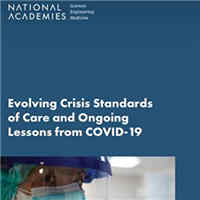
Acquired Weakness and Hospital Functional Mobility Outcomes Following Invasive Mechanical Ventilation in Patients with COVID-19
In critically ill COVID-19 patients, the incidence of ICUAW and acute gait dependence were high. Our study identifies factors influencing both outcomes. Future studies should investigate optimal COVID-19 ARDS management and... read more
Disposable Hospital Gowns May Pose Infection Risk
Disposable gowns designed to deflect the splatter of bodily fluids, used in thousands of U.S. hospitals, have underperformed in recent and ongoing laboratory tests and may fall short of safety standards, leaving health care... read more
Prevalence of PICS in Mechanically Ventilated Patients with COVID-19
Coronavirus disease 19 (COVID-19) patients usually require long periods of mechanical ventilation and sedation, which added to steroid therapy, favours a predisposition to the development of delirium and subsequent mental... read more
The Mysterious Vanishing of MIS-C
Whilst the overwhelming majority of Covid-19 infections in healthy children are mild or asymptomatic, the serious risk which remained was of the hyperinflammatory syndrome known as MIS-C (Multi-system Inflammatory Syndrome... read more
Pericarditis and Myocarditis in the ED
Chest pain is one of the most common presentations to the emergency department (ED) and includes a wide differential diagnosis. In today’s post, we will review a less common cause of chest pain seen in the ED: pericarditis... read more




